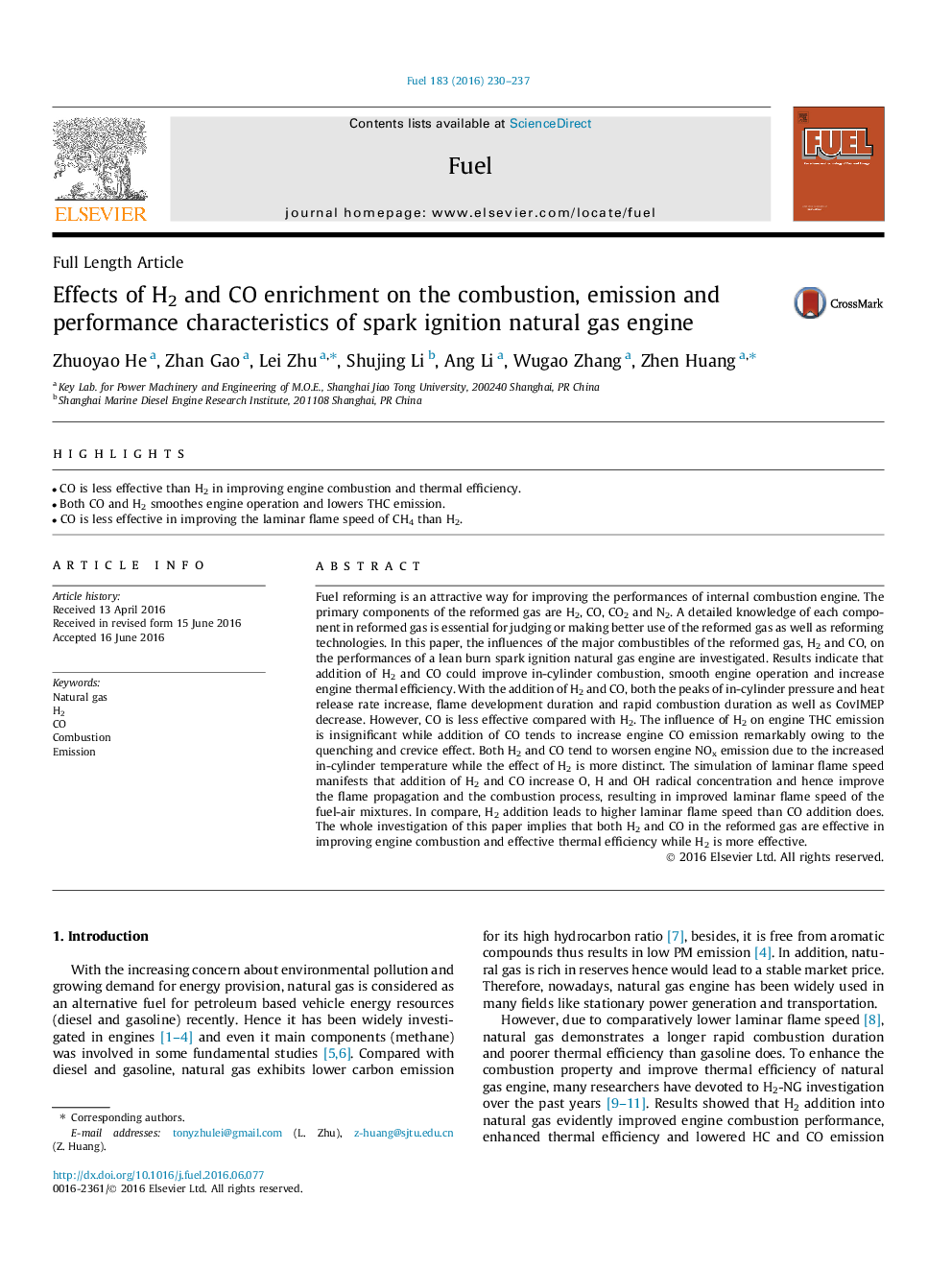| Article ID | Journal | Published Year | Pages | File Type |
|---|---|---|---|---|
| 6633255 | Fuel | 2016 | 8 Pages |
Abstract
Fuel reforming is an attractive way for improving the performances of internal combustion engine. The primary components of the reformed gas are H2, CO, CO2 and N2. A detailed knowledge of each component in reformed gas is essential for judging or making better use of the reformed gas as well as reforming technologies. In this paper, the influences of the major combustibles of the reformed gas, H2 and CO, on the performances of a lean burn spark ignition natural gas engine are investigated. Results indicate that addition of H2 and CO could improve in-cylinder combustion, smooth engine operation and increase engine thermal efficiency. With the addition of H2 and CO, both the peaks of in-cylinder pressure and heat release rate increase, flame development duration and rapid combustion duration as well as CovIMEP decrease. However, CO is less effective compared with H2. The influence of H2 on engine THC emission is insignificant while addition of CO tends to increase engine CO emission remarkably owing to the quenching and crevice effect. Both H2 and CO tend to worsen engine NOx emission due to the increased in-cylinder temperature while the effect of H2 is more distinct. The simulation of laminar flame speed manifests that addition of H2 and CO increase O, H and OH radical concentration and hence improve the flame propagation and the combustion process, resulting in improved laminar flame speed of the fuel-air mixtures. In compare, H2 addition leads to higher laminar flame speed than CO addition does. The whole investigation of this paper implies that both H2 and CO in the reformed gas are effective in improving engine combustion and effective thermal efficiency while H2 is more effective.
Keywords
Related Topics
Physical Sciences and Engineering
Chemical Engineering
Chemical Engineering (General)
Authors
Zhuoyao He, Zhan Gao, Lei Zhu, Shujing Li, Ang Li, Wugao Zhang, Zhen Huang,
